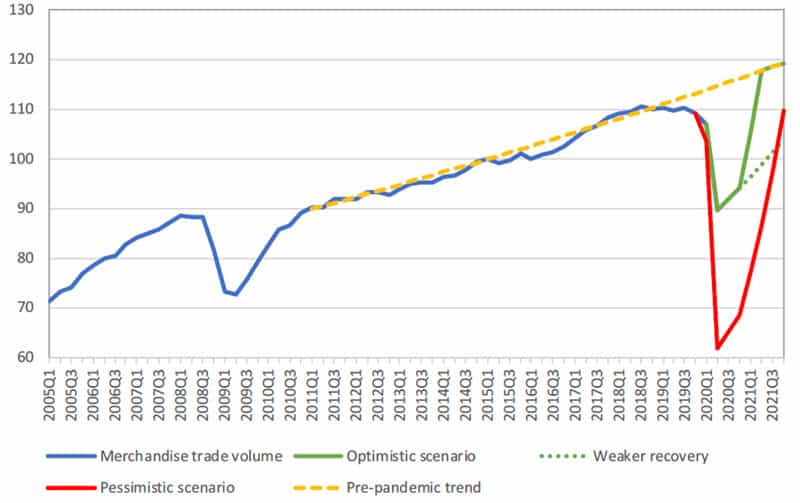“The future ain’t what it used to be.”
— A favorite quote of baseball legend Yogi Berra
Let’s take a moment to reflect on how much conditions have changed since Q4 of 2019.
Back then, your company was probably putting the final touches on its financial and operational plans for 2020.
As you polished the shiny deck of PowerPoint KPI slides to present at management review meetings, the advice of supply chain logistics and manufacturing operations consultants might have been ringing in your ears: “Are we undertaking the right kind of customer-centric, value-added digital transformation across our supply chain that’s in line with industry best practices? Are we leveraging the power of the cloud to ensure end-to-end supply chain transparency, minimize our Capex and inventory carrying costs, and elevate our stock price and EBITA?”

At this moment, if someone told you, that in just a few weeks, major sectors of the US (and world) economy would be shut down over a pandemic, that e-commerce sales would jump up by an extra $52 billion dollars, that 96% of passenger airline flights would be cancelled (and many of the remaining flights would have cargo packages strapped into the seats) – and most shockingly — that supply chain logistics and manufacturing operations would be headline news nearly every day, you would have dismissed it as crazy talk.
But then it happened. And here we are.
“The best laid plans of mice and men often go awry.”
— Robert Burns in his poem To a Mouse
So where do we go from here?
What can you do now to ensure that your business thrives during these difficult times?
Here are ten steps to consider:
1. Ensure the Safety and Health of Your Workers
Taking care of your employees should be at the top of your to-do list.
Implementing the new recommendations from OSHA and the CDC to protect workers on the job is a crucial first step. Across the country, facility managers are busily stepping up cleaning and hygiene procedures, as well as reconfiguring floor plans to increase social distancing at work and are installing new furniture accessories (such as transparent barriers) to discourage virus transmission on the job.
Tip: see our in-depth articles on how schools and offices, laboratories, and warehousing/distribution centers and manufacturing facilities can prepare their workplace environments for returning employees.
Managers also need to keep in mind that many of their employees have had completely different experiences as a result of the pandemic lockdown.
On one hand, you may have essential employees who have continued to work tirelessly during the epidemic (such as Formaspace employees working two shifts to produce workstations for GM’s new ventilator plant, or Novartis employees working staggered shifts to produce high demand pharmaceuticals).
On the other hand, employees returning to work for the first time after the pandemic lockdown will need reassurance and guidance as they come to terms with many of the changes brought about by the virus pandemic – from new procedures to stay socially distant on the elevator, to reduced access to on-site cafés and kitchens, to newly instituted schedule changes (such as office employees working in shifts), and proper procedures for wearing masks and other PPE.
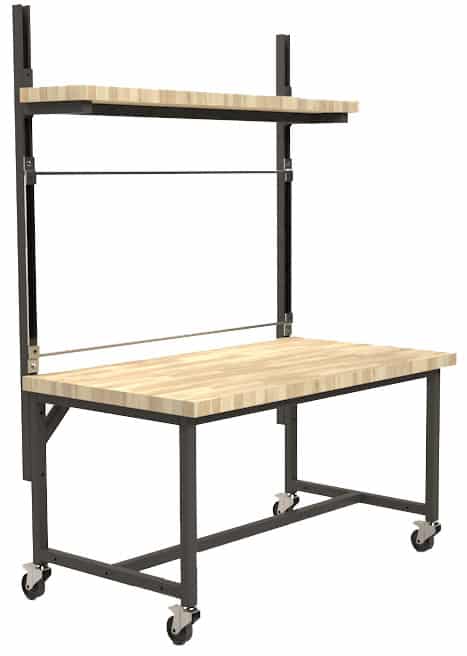
Don’t overlook the need to support employees who may be having emotional difficulties, even mental health problems, brought on by all these sudden changes. Mollie West Duffy and Liz Fosslien, co-authors of the book No Hard Feelings: The Secret Power of Embracing Emotions at Work, recently spoke to Paul Michelman, host of MIT Sloan Management Review’s Three Big Points podcast on business management, where they point out that smart managers need to embrace empathy in times of crisis. “If we don’t address or acknowledge our feelings at work, they come out in unproductive ways,” says Duffy. It’s not that they go away. And so the best thing is to acknowledge them and learn how to actually use them in a healthy way.”
Given the sensitivity surrounding the virus pandemic, managers may also tend to shy away from broaching the performance of their employees, especially those currently working from home. Liz Kislik, a management consultant and executive coach, disagrees; she stresses the importance of making personal phone calls (not a zoom meeting) to find out what is happening with an underperforming employee, and how you can work together to help things moving forward.
2. Get Closer to Your Customers, Much Closer
If you’ve had a rock-steady customer for 20 years, do you really know them?
Maybe you once did — but it’s hard to know what they’re thinking now.
Not sure if you agree? Think about your own circumstances and the ways your business has changed since January 1, 2020 — now extrapolate this to your business partners.
At this very minute, your customers, and, very importantly, their customers, could be changing up their business plans in ways that will dramatically affect their purchasing plans and their choice of vendors – any of which result in a direct effect on your bottom line.
What should you do?
Many of the traditional ways of conducting business are currently on ice, such as trade shows, roadshows, press tours, sales meetings, and the like.
But the telephone is available.
Even if you have a direct or indirect sales channel that should be providing you up-to-date sales forecast information, make it your business to call your customers and find out what your customers are thinking. Are there purchasing plans changing? Do they have some new requirements that you could satisfy? What can you do today to help them survive; even thrive during these difficult times?
Dig a little deeper to gather further business intelligence on your customer’s customers. When speaking to them, can you identify if there will be sudden shifts in demand (good or bad)? Can you discern any new opportunities? How can you be of service?

Now is also a good time to leverage the power of a Customer Advisory Council, if you have one in place. (If not, now’s a good time to create one.) These types of councils, which exist under the guise of many names (user groups or associations, online forums, special interest groups, etc.) can be invaluable in providing honest, useful, actionable recommendations to improve your products and services.
Unfortunately, due to the coronavirus pandemic, most of the traditional in-person meetings that were scheduled to take place in conjunction with trade shows, annual sales meetings, product launches, won’t be happening this year. If that’s the case, now’s the time to re-create them in online form so that you don’t miss out on crucial market intelligence direct from your customers, including the new potential sales opportunities or new product or service offerings that you hadn’t thought of before.
3. Be Flexible when Offering Standardized and Customized Options
Flexibility is the watchword during this coronavirus pandemic.
On the one hand, you might find it possible to modify your existing product line to make it fit the current needs of your existing customers.
Such was the case here at Formaspace. Based on customer suggestions, we were able to quickly create new accessories (such as transparent shields) to transform our existing line of workstations into upgraded products that meet new CDC recommendations for protecting workers on the job. And, thanks to our flexible production lines, here at our Austin Texas factory headquarters, we have also been able to supply our existing customers with modular upgrade kits so that they can have the latest safety features as well.

In other cases, production and supply chain flexibility means cutting down on customer choices — a counter-intuitive thought for sure, but one that’s been necessary for many manufacturers who have been caught short on available workers or raw materials.
For example, Frito-Lay has elected to streamline its production of Cheetos, temporarily jettisoning over a dozen flavors of Cheetos to focus on maximizing the production of the main product line.
In other cases, food manufacturers have had to consider revising products. Mark Schneider, the chief executive of Nestlé, was quoted in the Financial Times, saying, “There is no magic bullet . . . In some very limited cases, we can think about adjusting recipes if there is a critical ingredient missing.”
Other sectors of the food supply chain haven’t been so lucky. Radically diminished demand, from restaurants across the country, has thrown farm production into disarray, with many farmers forced to cull herds of livestock (especially pigs and chicken) because the meat production facilities couldn’t find enough wholesale customers quickly enough. In response, some beef ranchers have found success in quickly creating ad hoc distribution channels that bypass traditional abattoirs to bring meat products directly to the consumer.
And, as we’ve seen throughout this pandemic, demand for certain products has outstripped supply. MIT’s Sloan School of Management offers concrete, ethical advice on how to handle these situations, which, as we have seen in recent months, could be a matter of life and death decisions. They advise managers to: favor your most important customers; maximize short-term revenues; treat everyone equally; shape demand; alter products; and take care of the vulnerable.
4. Find Ways to Perform Deeper Demand Forecasting
While the final numbers for the first half of 2020 are not yet in, the WTO has weighed in with their forecasts, and the numbers are frankly quite sobering.
Looking at world merchandise trade volume from Q1 of 2005 (index equals 100) through Q4 of 2021, the WTO’s forecast spread is remarkably uncertain: things could be bad, or they could be really, really bad (the optimistic scenario is a 25 point drop off while the pessimistic scenario is nearly 50 points).
Given that level of uncertainty in economic forecasts, making actionable assessments of future demand is really difficult right now.
What are your traditional “go-to” forecasting tools?
Now’s the time to take another look at your forecasting methods and evaluate whether they are able to pass the “stress test” caused by these difficult, changing times.
It’s also probably a good idea to put additional weight into the markets intelligence you gathered by speaking to customers – and their customers (See item 2 above) — when making your own demand forecasts.
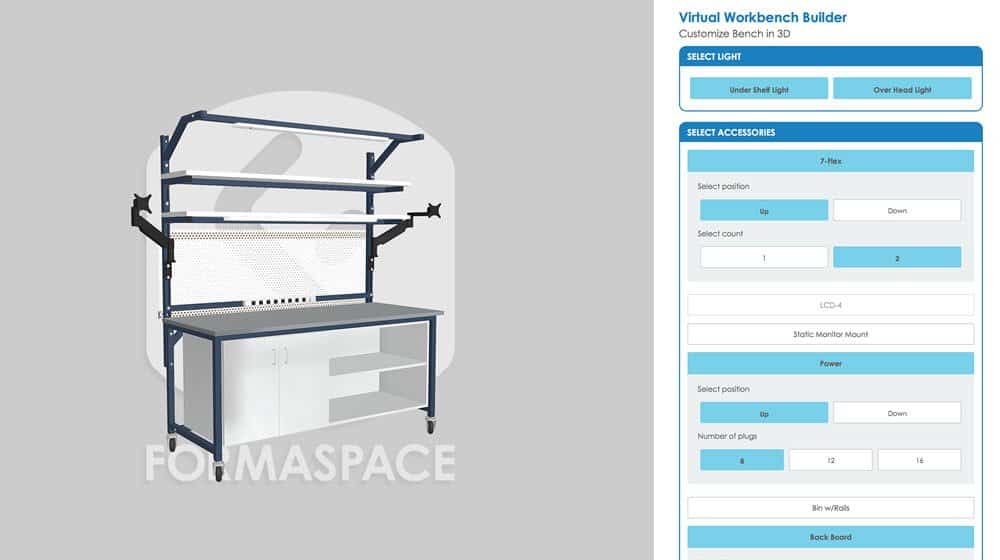
Of course, every business in every market sector is different. Just as FEMA disaster response teams look to the number of open Waffle House restaurants to gauge the conditions on the ground after a hurricane, or the Economist magazine uses the price of a McDonald’s hamburger around the world to quantify local purchasing power of different monetary currencies, you may have identified a number of useful forecasting “tricks” up your sleeve that work in your industry.
If so, now is the time to pull them out see if they can help you out.
There is some good news on the horizon. For example, if your supply chain is dependent upon raw materials and products from Asia, the shipping industry is recovering somewhat (shippers are even commissioning new smaller, faster ships that can deliver cargo from Asia to the US in just 12 days – a week faster than regular cargo ships) and, while airline flights overall have fallen precipitously, air cargo shippers have cleverly maximized cargo shipment on the few remaining planes in the air.
The big question, of course, is how fast will demand recover in your line of business.
In the meantime, it’s likely we’ll see a multi-speed, multi-phase recovery with sectors (such as hospitality and entertainment) lagging behind better performing sectors (online commerce and home delivery, for example) until a virus vaccine is widely available.
5. Focus on Attracting and Developing Skilled Talent
If you have extra downtime, now’s the time for employee development. For example, consider asking your employees working from home to take additional online classes that are relevant to your industry sector or study for certifications that would help your business run more efficiently in the future.
Unfortunately, many talented professionals in supply chain logistics and manufacturing operations will be laid off or lose their jobs entirely during the Covid-19 pandemic downturn.
If you are in a position to do so, consider recruiting some of these star players to enhance your team.
Keep in mind that during the height of the 2008 Great Recession, many companies were able to identify and recruit highly talented employees, who might not have otherwise been available on the job market, giving them a strategic advantage over their rivals. Similar recruiting opportunities may exist today.
On the other hand, if you’re considering laying off workers at this time, consider how difficult it might be to recruit new employees to replace them once business conditions begin to pick up again.
In a recent Industry Week interview, Chris Haydon, president of SAP Procurement Solutions, asked the question: “How do manufacturers get workers to get the work done? There’s a degree of obviously unfortunate rising unemployment, but the reality is as the supply chains come back, you’re going to need the talent to still make the supply chains run.” In some cases, the solution may be a mix of full time and contingent workers. “People are looking very carefully at the talent pools for people with the skills needed to run the supply chain. How can they be very creative in balancing full-time equivalent versus temporary (contingent workers) to let them have agility and responsiveness, in manufacturing?”
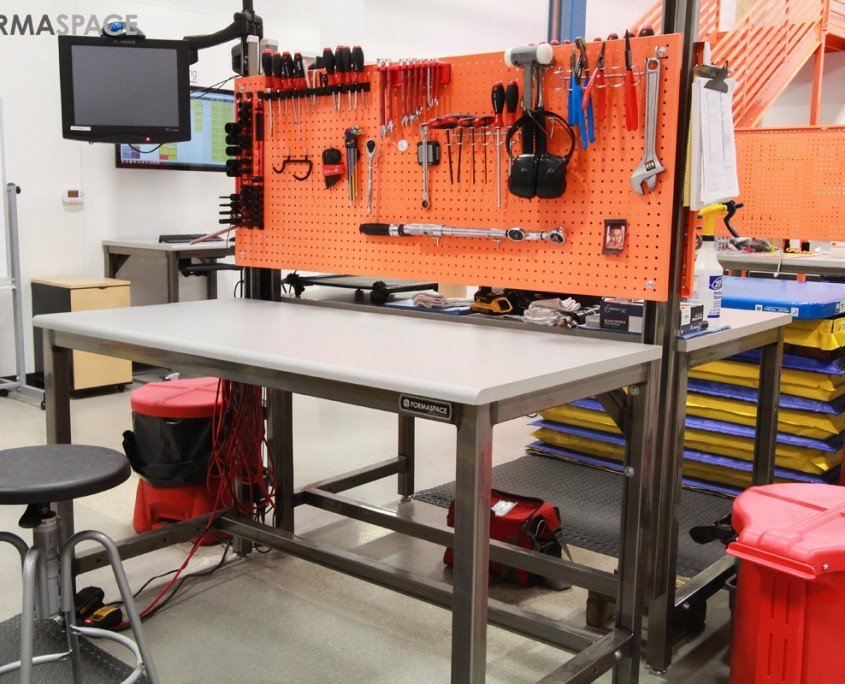
6. Throw Best Practices out the Window for the Time Being
In case you weren’t aware, academics in economics have a term to describe the situation that many of us find ourselves, one where we lack sufficient data to respond to unpredictable future events.
It’s called Knightian Uncertainty, named after the University of Chicago economist Frank Knight, who published Risk, Uncertainty, and Profit in 1921, published just after the 1918-1919 Spanish Flu pandemic. (Is that a coincidence? We’re uncertain – but it’s certainly possible.)
What does Knightian Uncertainty tell us? Well, according to Francisco Polidoro, Associate Management Professor at the McCombs School of Business at The University of Texas at Austin, it means that supply chains need to build in what he and his co-authors call “branching” resiliency. Branching goes a step beyond the normal “dual sourcing” strategy by implementing fully independent value chains, so that in the event of a pandemic, a war, or closing of national borders, the business can continue and avoid shutting down.

In normal times, proposing such an idea as branching would be shot down immediately due to the excessive cost involved in duplicating all the duplicate supply chain activities.
However, in today’s current conditions, everything should be up for debate, including industry best practices. After all, just how useful are best practices in informing supply chain operations when all the rules have suddenly changed?
Well-known supply chain consultant Bob Ferrari, writing in his Supply Chain Matters blog, points out how dramatically things have changed in the boardroom since Covid-19 came onto the scene. He writes, “Gone are historic forecasts and playbooks in inventory and distribution policy, at least for now. Historical charts of sales in inventory ratio have hollow meaning when inventory is needed to preserve customers and revenue flow. Within essential business and product categories, inventory remains a lifeline toward mitigating added virus spread.
The notion right now is business continuity, and all that is required to ensure that liquidity and supply chain capability remains functioning. Information is likely changing daily or hourly, and the need is for context and the most-timely status of demand, available supply, and production capability.”
In other words, now may be the right time to focus on short term planning to ensure your company’s financial survival.
7. Get to Know Your Suppliers and Their Suppliers
Earlier, we talked about the importance of getting to know your customers—and their customers — to identify any trouble on the horizon, such as an unexpected increase or decrease in future sales demand.
Now let’s pivot to your suppliers.
How well do you know your suppliers?
The answer is, “it varies.”
Pharmaceutical companies are probably among the best informed about their suppliers, while many B-2-C companies (such as fashion houses) have only recently stepped up visits to overseas factories to make good on pledges to monitor human rights conditions among factory workers.
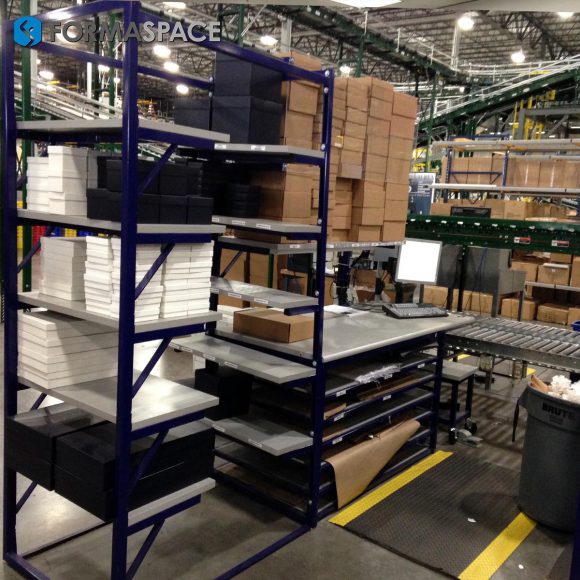
Here is the bottom line: Just because a supplier has been reliable in the past doesn’t mean they will be so in the future.
Indeed, during this pandemic, the supply chain has become like the Wild West in many respects.
For example, in recent months, companies that “followed the rules” and paid for critical PPE orders from China have found their shipments rerouted on the tarmac at the last minute, essentially hijacked by unscrupulous agents. Indeed, competition for PPE during the height of the pandemic forced many companies to hire armed security guards to ensure that their deliveries got through.
Yes, these are extreme examples.
But today’s turbulent economic conditions have undercut the reliability of suppliers across the world. Even when a bad situation is technically not their fault, suppliers may find out too late that a critical raw material is in short supply or it’s no longer available, that customs may delay overseas shipments, or that factories are temporarily closed due to worker illness. In these cases, you might eventually get the materials you ordered, but in other cases, the supplier may simply go out of business, leaving you holding the bag.
That’s why it’s incredibly important at this time to perform extra due diligence, even on your regular suppliers to find out what the conditions are on the ground and how their supply chain is holding up from the strain.
8. Shorter Supply Chains Offer Advantages
The shortage of American-made medical equipment and PPE during the height of the Covid-19 lockdown was a watershed moment for the general public.
Until that moment, few members of the general public had much awareness of our dependency on overseas manufacturing.
That’s no longer the case.
People who otherwise had little to no prior knowledge of supply chain logistics and manufacturing operations suddenly began talking about the importance of supply chain resiliency and sustainability.
Indeed, there is a lot of political debate about the notion of re-homing overseas supply chains back to the US, and “de-coupling” ourselves from China, for example.
It wouldn’t be easy, particularly in advanced technology markets, such as pharmaceuticals, which rely on highly-specialized, interconnected supply chains.
Consumers would also have to readjust their expectations in light of shorter supply chains. For example, in the food market, David Nabarro, the World Health Organization’s special envoy for Covid-19 points out that while “shorter supply chains offer greater resilience…” consumers will need to accept “that you won’t be able to get everything you want all year round, you have to respect seasonality of production.”
But the basic advantages are clear. Short supply chains are easier to monitor and less likely to break down compared to complex value chains that stretch across multiple countries and continents.
Smaller companies may lead the way to shorter supply chains.
One example is Schoolhouse, a Portland, Oregon-based manufacturer of homewares, lighting, and hardware. According to company president Sara Fritsch, Schoolhouse sources most of its supplies domestically, and more than 80% of its products are made in the US. Speaking to OregonBusiness about a recent product launch, Fritsch said, “because we have our own factory, we could still pull it together and produce enough product to launch with. It helps that we have end-to-end control of our business from product design and development through to purchasing and planning, assembly, manufacture, and finishing of those materials. It is all happening within our building.”

9. Now May Be the Wrong Time for “Just in Time” Inventory Control
In light of the coronavirus pandemic, some supply chain operations experts have begun to pose a very uncomfortable question:
“Is the era of Just-in-Time (JIT) inventory control coming to an end?”
Stated differently, how can the long-held mantra of reducing inventory carrying costs — at all costs — survive in an era when supply chain resiliency is becoming increasingly important?
There are signs that just-in-time inventory control is being pushed into the background as the Covid-19 crisis highlights the need for increased inventories, albeit under the cover of boardroom buzzwords such as “agile,” “risk management,” “sourcing diversification,” “onshoring and multishoring,” and “supply chain resilience.”
But the facts on the ground are very telling.
According to Michael Zimmerman, a partner at A.T. Kearney and the lead author of the State of Logistics report by the Council of Supply Chain Management Professionals, “multi-shoring and higher inventories are two likely outcomes” from the “painful and chaotic period” caused by the pandemic.
Zimmerman also predicts that companies will need more warehouse space to guard against potential shortages, which could be a boon for transportation and warehousing providers, who can invest in the technology needed to improve efficiency as they step up to support increased demand due to online shopping.
New trade barriers around the world may also come to bear on just-in-time inventory control practices as well. Take manufacturing industries in the UK as an example. Brexit negotiations with the EU are currently showing very few signs of progress; if nothing substantial is agreed by this fall, then come January 1, 2021, UK companies (such as that massive Nissan auto factory in Sunderland near Newcastle) may be forced to stockpile additional inventory to compensate for multi-hour (or multi-day) delays as parts shipments are processed through customs at the EU border.
10. Technology (Such as Automation) Can Help But it Can Also Complicate Things
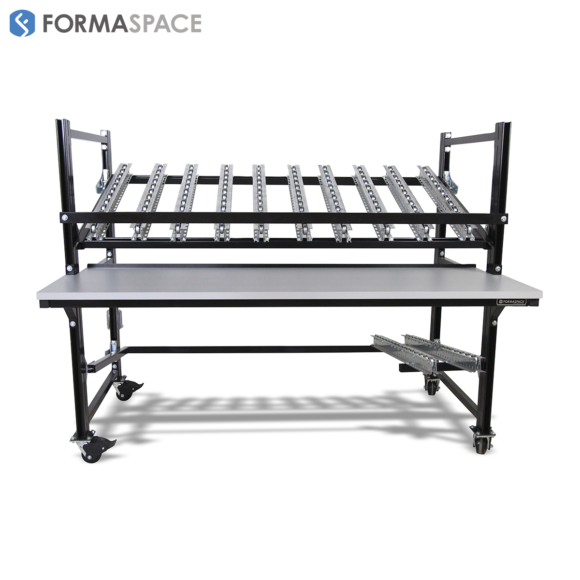
End-to-end visibility of inventory has long been a holy grail of supply chain management, and many of the companies that invested in supply chain technology systems prior to the Covid-19 outbreak are now reaping the benefits from the investment.
Take freight operators who invested in real-time systems to track deliveries. These companies have been better able to cope with the sudden surge in consumer demand for home delivery. The new data systems make it easier for companies, such as J.B. Hunt,to track customer demand, set up new delivery routes, split loads across vehicles, even monitor the temperature of high-value goods such as pharmaceuticals en route to climate-controlled warehouses.
Cloud-based Enterprise Resource Planning (ERP) systems have also been a boon to companies who found it difficult to keep track of information stored in various databases that couldn’t talk to one another. (Disclaimer: Formaspace is just such a company; we were fortunate to transition over to NetSuite from Oracle during 2019, e.g. prior to the onset of the pandemic.)
Indeed, there is no shortage of available technologies either on the market (or on the drawing board) — from robot factory workers to blockchain-based supply chain authorization systems.
But before you proceed with implementing the latest new technology solution, ask yourself the simple question:
“Is this the right time to divert scarce resources toward a new technology project?”
Think about the time involved to complete a technology implementation, and the distraction it can have on your business operations.
Instead, now may be a time to focus your efforts on taking care of your employees, listening to customers, keeping an eye on your suppliers, and using your financial resources to take care of business first. THEN, when those things are in good shape, take the next steps toward improving your technology systems for the future.
Formaspace is Your Supply Chain and Manufacturing Efficiency Partner
When it comes to creating healthy working environments that are efficient, ergonomic, and productive, Formaspace is your partner.
If you can imagine it, we can build it, right here at our factory headquarters in Austin, Texas.
We encourage you to find out more. Speak with your Formaspace Design Consultant to find out how we can work together.
Join other leading companies, including Capital One, Ford Motor Company, Google, Roche, and SpaceX, who to turn to Formaspace for their space planning and furniture needs.


